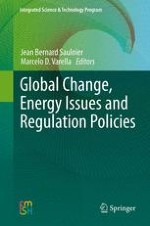2013 | OriginalPaper | Buchkapitel
2. Greenhouse Gases and Climatic Change
verfasst von : Vincent Moron
Erschienen in: Global Change, Energy Issues and Regulation Policies
Verlag: Springer Netherlands
Aktivieren Sie unsere intelligente Suche, um passende Fachinhalte oder Patente zu finden.
Wählen Sie Textabschnitte aus um mit Künstlicher Intelligenz passenden Patente zu finden. powered by
Markieren Sie Textabschnitte, um KI-gestützt weitere passende Inhalte zu finden. powered by
